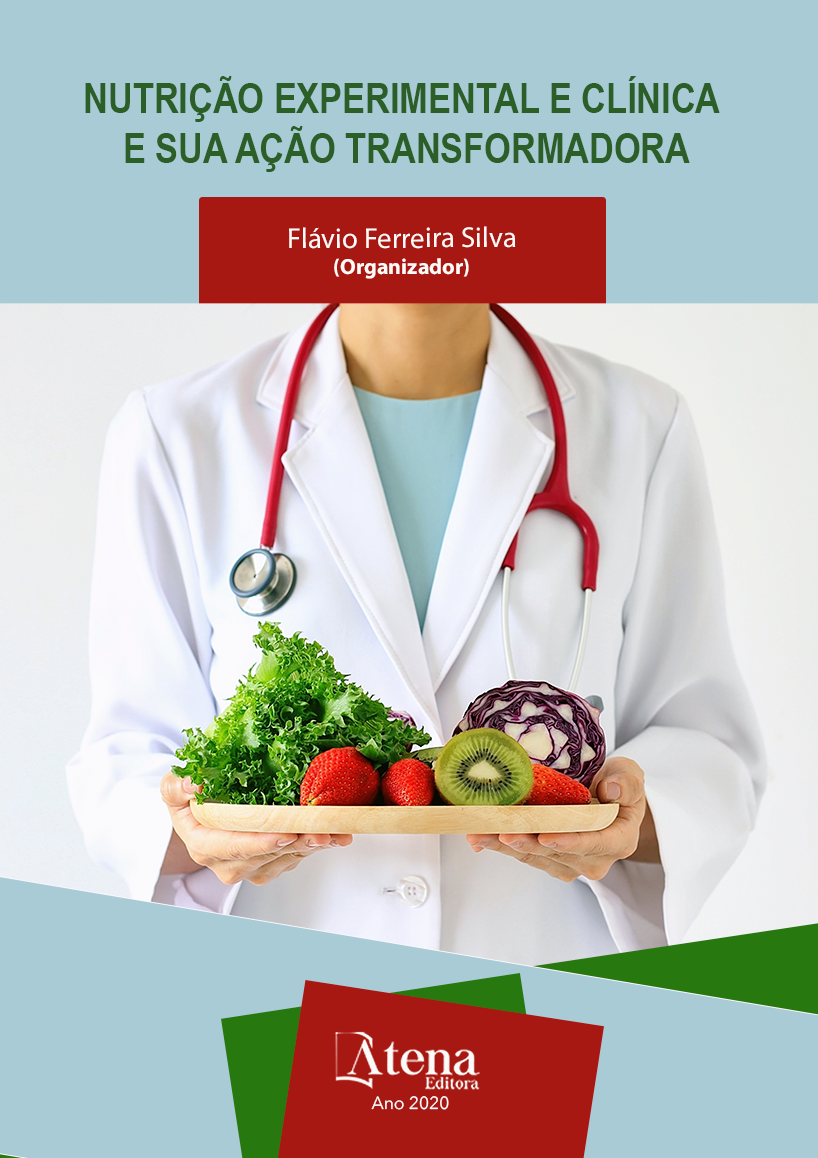
ESTRATÉGIAS NUTRICIONAIS NA LESÃO POR PRESSÃO
Introdução: As lesões por pressão (LPP) são um problema mundial e são descritas como dano localizado na pele e/ou tecido subjacente, geralmente sobre um osso proeminente, que pode ainda estar relacionado a equipamentos médicos ou outro tipo de dispositivo. A nutrição possui papel fundamental na prevenção e tratamento de LPP. A má ingestão nutricional e baixa nutrição são considerados fatores de risco interno para o desenvolvimento de LPP Objetivo: descrever as estratégias nutricionais em LPP de um paciente hospitalizado para reabilitação. Resultados Alcançados: Trata-se de um relato de caso de um paciente internado em um hospital de retaguarda para reabilitação e tratamento de duas LPPs em região sacral grau IV, com infiltração, infectadas por bactérias pseudomonas. A ingesta hídrica foi calculada de acordo com a necessidade do paciente. Foram feitas orientações, já que o paciente não tinha boa adesão ao tratamento nutricional. O paciente encontrava-se desmotivado, frente as lesões que nunca se fecharam, além de se sentir incapaz, frente a sua funcionalidade diminuída. O trabalho foi feito em conjunto com a equipe de enfermagem do setor. Na admissão paciente apresentou exames bioquímicos e exame físico sem alterações e foi classificado com sobrepeso. Foi ofertada uma dieta hiperproteica (1,4g kg/peso) na consistência livre e adicionado suplemento com 30g de proteína por dia, divididos em 3 horários. Após 50 dias de acompanhamento, o paciente demonstrou adesão ao tratamento, e consequentemente melhora na lesão, que teve uma redução da profundidade de 3 cm, diminuição de exsudato seroso e biofilme, e presença de tecido de granulação, além da ausência de infecção bacteriana. Ainda, paciente perdeu 4 kg e circunferências corporais, que auxiliou na motilidade e melhora da qualidade de vida. Conclusão: A dietoterapia voltada ao tratamento da lesão por pressão é fundamental para melhoria global na qualidade de vida de pacientes hospitalizados.
ESTRATÉGIAS NUTRICIONAIS NA LESÃO POR PRESSÃO
-
DOI: 10.22533/at.ed.4212015053
-
Palavras-chave: Lesão Por Pressão. Reabilitação. Dietoterapia.
-
Keywords: Pressure Injury. Rehabilitation. Dietotherapy.
-
Abstract:
Introduction: Pressure ulcer are a worldwide problem and are described as localized damage to the skin and/or underlying tissue, usually on a prominent bone, which may still be related to medical equipment or another type of device. Nutrition has a fundamental role in the prevention and treatment of pressure ulcer. A bad nutritional question and low nutrition are internal risk factors for the development of pressure ulcer. Objective: describe how nutritional strategies of a hospitalized patient for rehabilitation with pressure ulcer. Results achieved: This is a case of a patient admitted to a rear hospital for rehabilitation and treatment of two pressure ulcer in the grade IV sacral region, with infiltration, infected by pseudomonas bacteria. Water intake was calculated according to the patient's needs. Guidance was given, as the patient did not have good adherence to nutritional treatment. The patient was unmotivated, facing injuries that never close, in addition to feeling incapable, due to their reduced functionality. The work was done in conjunction with a nursing team in the sector. Upon admission of the patient, the biochemical and physical examinations were altered and were classified by comparison. A high-protein diet (1.4g kg / weight) was offered in free consistency and a supplement with 30g of protein per day was added, divided into 3 schedules. After 50 days of follow-up, the patient demonstrated adherence to treatment and, consequently, the lesion improved, which had a 3 cm depth reduction, decreased serous and biofilm results, and presence of granulation tissue, in addition to the absence of bacterial infection. In addition, the patient lost 4 kg and corporate girth, which helped with motility and improved quality of life. Conclusion: A diet therapy aimed at the treatment of pressure injuries is fundamental for the overall improvement of the quality of life of hospitalized patients.
-
Número de páginas: 9
- Natalí Camposano Calças
- Rafael Alves Mata de Oliveira
- Alex Sander Cardoso de Sousa Vieira
- Joelson Henrique Martins de Oliveira
- Leticia Nakamura
- Michael Wilian da Costa Cabanha
- Juliana Galete
- Izabela Rodrigues de Menezes
- Carolina de Sousa Rotta
- Eli Fernanda Brandão Lopes
- Raquel Santiago Hairrman
- Letícia Szulczewskis Antunes da Silva


